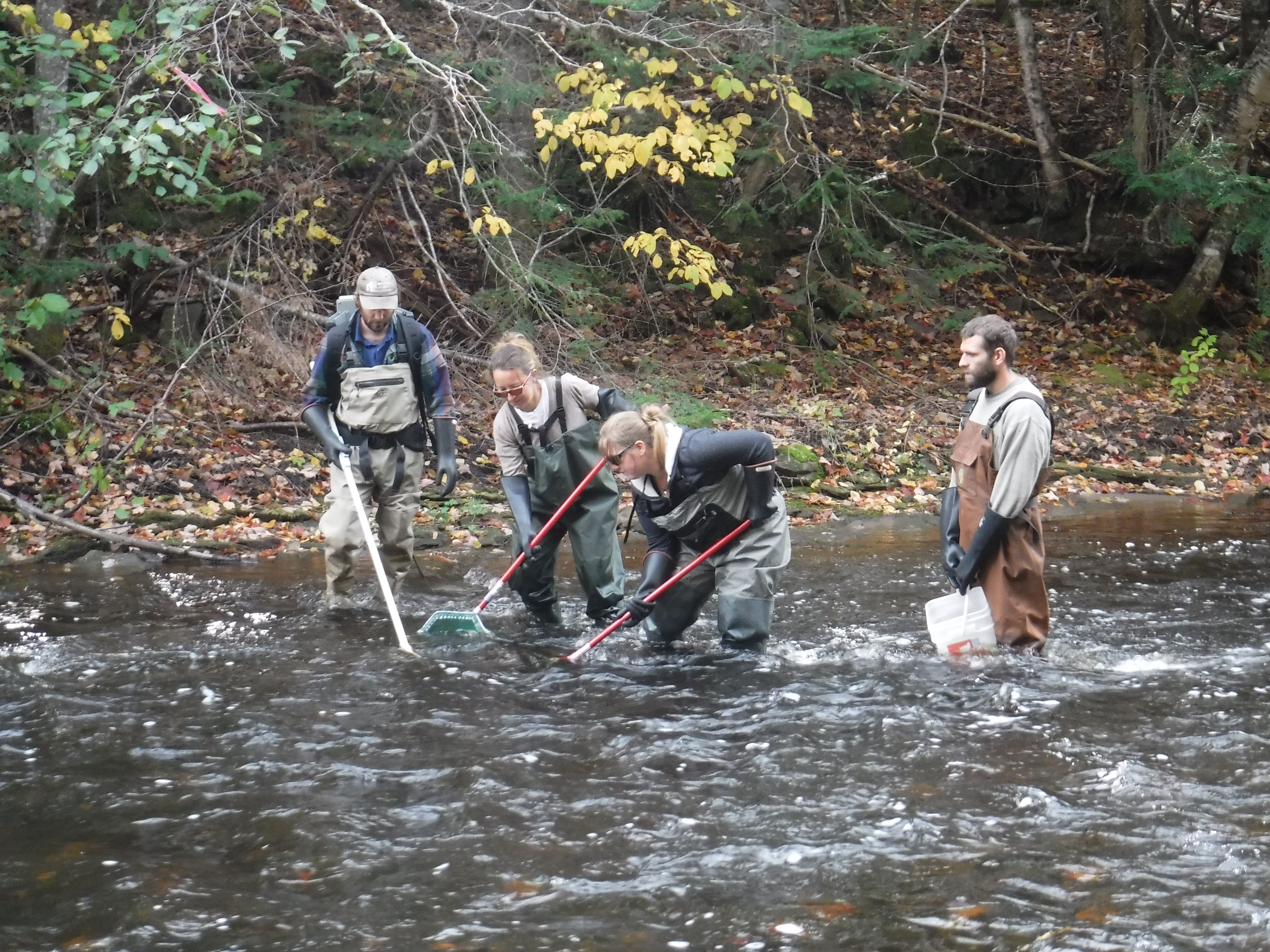Shediac Bay Watershed Association
September 7, 2017
Not too hot, and not too cold. The Shediac Bay Watershed Association (SBWA) is doing whatever it can to make sure that the watershed is a comfortable and welcoming environment for Atlantic salmon.
From population assessments to fish habitat enhancement, the SBWA is working towards a goal of making the Shediac Bay an ecosystem thriving with Atlantic salmon. And they are proud to have the Atlantic Salmon Conservation Foundation as a partner helping with its conservation initiatives.
Jolyne Hébert, an environmental technician with the SBWA, explains multiple studies are ongoing in the Shediac Bay watershed to help improve water quality and fish habitat.
“In 2017, stream assessments will be done in the rivers to identify salmon spawning habitat, pollution sources, erosion causing sedimentation, blockages and problematic culverts causing habitat fragmentations and fish passage issues,” she said.
“As water temperature is critical for salmon, a total of seven temperature loggers have been installed in various locations in salmon confirmed rivers to monitor temperature fluctuations. This temperature monitoring tool shows hot spots and cold zones within the watershed and will help guide restoration efforts, whether it’s planting trees to enhance tree canopy coverage, or the protection of precious cold spots where salmon might migrate during periods of thermal stress.”
Fish habitat restoration projects for 2017 – possible in part because of $10,000 in grant funding from the Atlantic Salmon Conservation Foundation – includes the restoration of a problematic area in the Scoudouc River, where all-terrain and other off-road vehicles have caused damage to the riverbanks near a salmon pool. The restoration will consist of the stabilization of the eroding riverbanks.
“In addition, the SBWA is in the process of cleaning and stabilizing the Cornwall Brook, a tributary of the Scoudouc River, which has severe alder overgrowth and debris jams, in addition to severe erosion and sedimentation issues.”
Electrofishing is also done every year to better understand the population dynamics and distribution in the Shediac Bay watershed.
“In 2016, two new survey sites were selected based on the habitat characteristics that were expected to be favourable for salmon, led to exciting results. The new sites in the Weisner Brook and McQuade Brook, both tributaries of the Shediac River, contained 30 and 47 Atlantic salmon fry and parr respectively. Never had there previously been any surveys in our watershed that yielded as many juvenile salmon as this, creating joy and excitement for the SBWA team.”
Electrofishing surveys will continue in the fall of 2017. A new addition to the population assessment will be redd count surveys, where the team will walk along spawning habitats in search for salmon nests.”
Hébert points out that by conducting habitat assessments and population surveys, the SBWA is working on its goal to eventually do salmon restocking within its watershed to bring back the population that once graced its waters.
“Even if our rivers are small, they are still important for the long-term survival of Atlantic salmon.”
